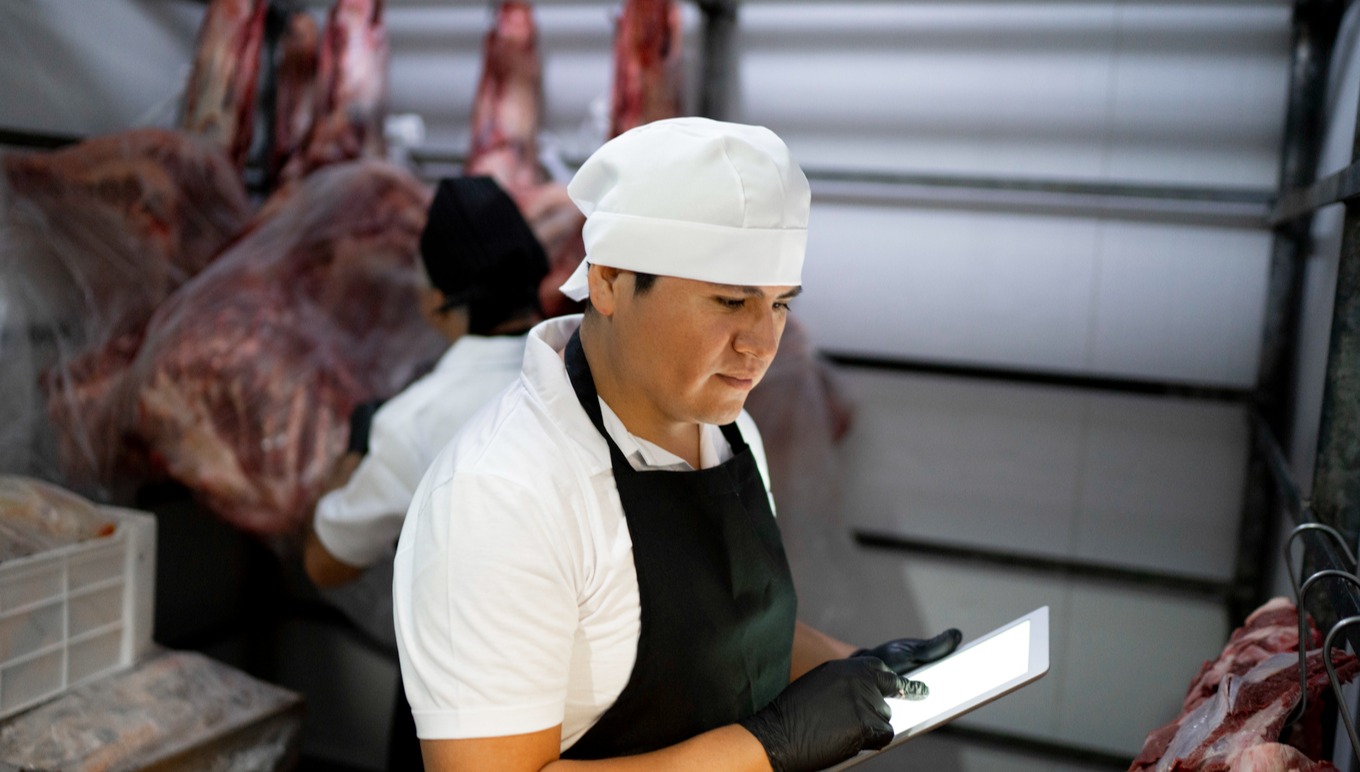Meat Distribution Software: ERP and TMS Features that Help You Tackle Sector-Specific Challenges
Meat Distribution Software: ERP and TMS Features that Help You Tackle Sector-Specific Challenges
Meat Distribution Software: ERP and TMS Features that Help You Tackle Sector-Specific Challenges
12 Apr 2023
 John McCurdy | Senior Content Writer, Marketing
John McCurdy | Senior Content Writer, Marketing
Food and beverage distribution is a much more complex and involved matter than it seems on the surface, and it’s even more challenging for those businesses that specialize in the meat, poultry and seafood industries. That’s in large part due to the unique characteristics and properties of these food items, as well as their perishable nature and the potential safety concerns that arise from their mishandling.
Of course, your customers expect your company to be able to account for these intricacies while also providing an excellent experience. They want to have their orders for steaks, chicken wings and fish filets delivered on time and in full, according to their exact specifications, each and every time. Those are some exacting demands, but it’s no less than what it takes to succeed in this industry.
Luckily, the tools you need to account for the nuances of protein products and distribute them efficiently exist, and they come in the form of software solutions tailor-made for the sector. Both enterprise resource planning (ERP) and transportation management systems (TMS) play pivotal roles for organizations like yours and can have a considerable positive impact on your outcomes.
So let’s dive in on these two kinds of meat distribution software and break down the most important features of them with regards to your specific sub-vertical. We’ll also highlight a few other functionalities of purpose-built ERP and TMS solutions that help you cover all the bases in your daily operations and start seeing better results right away.
ERP Features Critical for Meat Distributors
Companies that distribute meat, poultry and seafood must be able to accommodate the many additional critical details that products in those categories come with, as that’s essential for pricing them correctly and providing consumers with the information they need to make purchasing decisions. These tools of industry-specific food ERP systems will serve you well on this front:
Catch weight management functionalities automatically capture catch weights on an item level and allow you to track them at every stage in the supply chain, all without manual intervention.
Cut and grade features allow for the assignment of grades on a lot level and cuts on an individual item level with no inefficient workarounds necessary.
Data-rich labeling tools enable you to convey all the important characteristics of your products—including weight, cut, grade, age, country of origin and more—on labels and packaging.
Automatic weight calculation through integrations with connected scales saves your employees time and helps prevent human errors that might result from manual methods.
Quality, safety and sanitation management features let you automate the process of scheduling quality, food safety and sanitation checks to help ensure compliance with regulations.
Additional food ERP features of importance for meat distributors include lot and sublot management tools that help you establish full bidirectional traceability, which is a critical component of any food safety plan. Meanwhile, production planning and forecasting functionalities facilitate aligning supply and demand precisely through the use of data, helping to keep your inventory at optimal levels.
Speaking of inventory, the mobile and advanced warehouse tools of food ERP systems allow your workers to easily log receipt, storage and movement of goods as they progress through your facilities. And when it comes to getting your products in your trucks for dispatch and delivery, the transport features of our ERP for meat, seafood and poultry businesses help you calculate and visualize the space required for staging and loading ahead of time.
TMS Features Critical for Meat Distributors
A lot of the work involved in meat, poultry and seafood product distribution goes on before rubber even meets the road, as you’ve got to plan efficient routes, schedule deliveries according to customer expectations and take steps to ensure that your perishable goods are transported safely. A TMS developed specifically for businesses like yours caters to those exacting needs with these features:
Compartment management features enable segregation of different kinds of goods in the same vehicle to minimize the chances of cross-contamination and potential safety concerns.
Temperature zone controls facilitate the creation of precise temperature ranges within specific compartments, allowing you to keep your products below levels at which bacteria might grow.
Time window tools help you track how long certain items are on your trucks so that those most susceptible to temperature fluctuations can be prioritized for delivery first.
TMS solutions support meat distributors further with routing and scheduling optimization functionalities that use proprietary algorithms to automatically plan efficient routes that save time and miles while also accounting for client delivery preferences. Capacity management and dispatch smoothing functionalities help you account for constraints like a limited number of loading bays or variable warehouse crews and streamline your schedule for departures.
Scenario modeling is another key feature of the best TMS software, as it allows for the creation of “what-if” scenarios to estimate the impact of any changes you might make on your key performance indicators (KPIs). Our advanced solution, Aptean Routing & Scheduling Paragon Edition, also comes with robust digital record-keeping functionalities, and it can be further supplemented with our Electronic Proof of Delivery (ePOD) software and Aptean Home Delivery for an even more comprehensive toolset.
Choose Aptean: A Proven and Trusted Provider
We’ve really only scratched the surface in terms of all the ways that food ERP and TMS technology can serve a meat distribution company like yours. But it should be clear from the features we’ve called out here that systems of these types—when designed specifically for the meat, poultry and seafood sectors—can deliver a host of benefits for your business in a highly competitive market.
As for finding the right provider for your food distribution software needs, we’ve got several strong reasons you should consider Aptean among your top choices. We can begin with the collective decades of experience that our dedicated professionals have under their belts, which has afforded them an in-depth understanding of the meat and distribution industry challenges.
That, in turn, allows our teams to approach implementation collaboratively with your organization, providing best practice advice to help ensure a smooth system rollout, better utilization of the solutions’ functionalities and quicker return on investment (ROI). And on the subject of system deployment, we offer flexible cloud implementations on the Software as a Service (SaaS) model that can help provide the flexibility, stronger data protection, enhanced cybersecurity and greater accessibility you need.
Finally, we were recognized on The Software Report’s Power 500 Software Companies of 2023 list, coming in at the 30th overall spot to put Aptean in the top 10% of businesses recognized. That’s a testament to our products’ quality, reliability and performance, as well as our organizational strength and commitment to innovation and service.
Now, if you’re ready to learn more about our meat distribution software solutions and how your business can leverage them for success, contact us today. You can also request a personalized demo.
Ready to master the complexities of the meat and seafood industry?
Our seafood and meat processing ERP drives positive change and acts as a future-proof platform for growth.



